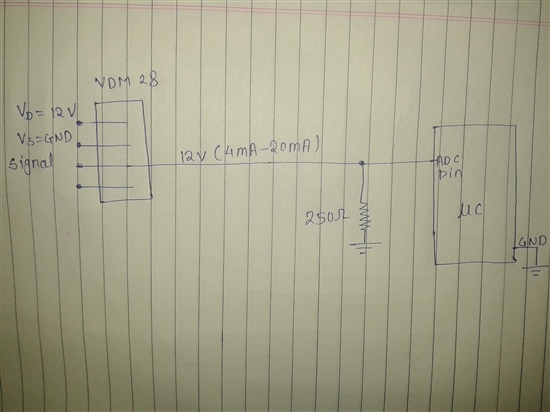Hello,
I am working on LASER distance sensor of pepperl+fuchs VDM 28 which gives output from 4mA to 20mA. Now currently i am converting this current into voltage using 250 ohm resistor and than it gives to 10-bit ADC of controller for actual processing. but my reading are very fluctuating so can i use RCV 420 current to voltage converter in order to increase accuracy ?? if it is than which schematic is useful for it ?. I am operating VDM 28 at 12V dc.
waiting for reply
Thanks,
Amit


